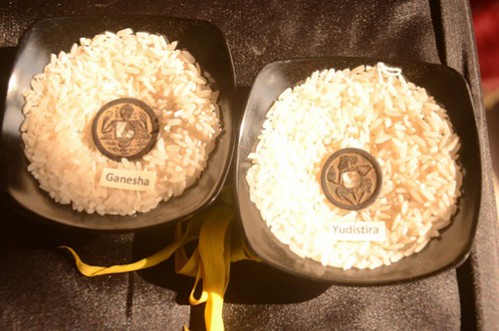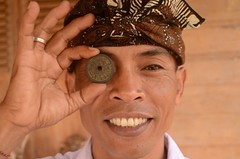
PREV ARTICLE
NEXT ARTICLE
FULL ISSUE
PREV FULL ISSUE
THE USE OF CHINESE COINS IN BALI
Here's a nice article from the Jakarta Post about the use of Chinese coins in Bali.
-Editor
For one volunteer with the Denpasar office of archeology, I Dewa Nyoman Putra Harthawan, ancient coins found across Bali can tell unexpected stories about the island’s earliest civilizations. A coin collector and lecturer on the archeology of currency at Udayana University, exhibited his coin collection during a recent puppet festival at the House of Masks and Puppets in Kubu Bingin. He says that one of his coins provides evidence of a millennia-old relationship between Bali and China. “My oldest coin is a Chinese copper coin from 175 BC. This small coin has a huge story, not only because it proves that there was ancient trade with China, but because these coins have become part of our culture.” “This coin is known as a ban liang, or half liang, from the Han dynasty,” Dewa says. “From these remains, we have good evidence that we have had contact with China since very early on [….] We have found not just one of these coins, but many coins from an era 2,000 years ago. We have had intensive contact with China for more than two millennia.” People in Bali used Chinese and Dutch coins from ancient times throughout the Dutch colonial occupation all the way until Independence, Dewa said. “Up to the 1950s, Bali had two currencies — Dutch and Chinese coinage simultaneously, but holding different values, much like the rupiah against the dollar today.” Artisans of these former eras have also left their mark, with many coins bearing symbols specific to Indonesian culture and beliefs, rather than Chinese characters.

Dewa’s collection features many coins, some tarnished and black, others defaced with the original Chinese characters removed and re-etched with symbols of wayang puppets, horses and elephants. “The removal of Chinese characters is a big mystery,” Dewa says. “This may have been done between the 15th and 17th centuries, with the inspiration to alter the coins influenced by the Majapahit period. There is an Indian influence to the coins that is quite different from their original Chinese characters.” The introduction of symbols from Hindu epics such as the Mahabharata has echoed through the centuries, with Balinese still using Chinese coins as offerings in religious ceremonies.
To read the complete article, see:
History etched in ancient copper
(www.thejakartapost.com/news/2013/10/10/history-etched-ancient-copper.html)
The Numismatic Bibliomania Society is a non-profit organization promoting numismatic literature. See our web site at coinbooks.org. To submit items for publication in The E-Sylum, write to the Editor at this address: whomren@gmail.com To subscribe go to: https://my.binhost.com/lists/listinfo/esylum All Rights Reserved. NBS Home Page Contact the NBS webmaster 
|
